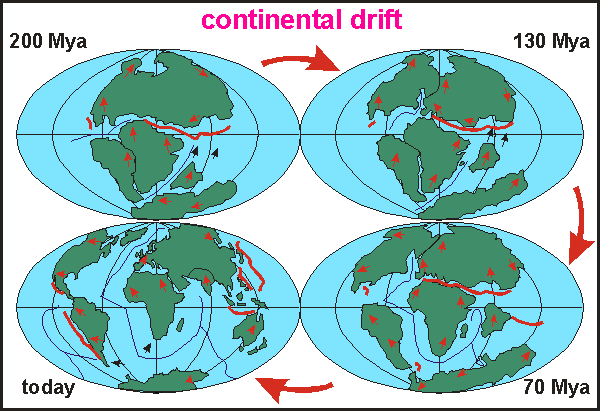
Evolution
Olivia Brennan
Biogeology
and continental drift
Scientists have discovered that there are similiarities in species from different continents. This could be for many reasons. One could be because of continetal drift.
Von Humboldt and other naturalists noticed many similarities among fossils of plants and animals on either side of the Atlantic. They also noticed that two continents with smiliar species often "fit together", such as South America and Africa. They noted that mountain ranges, such as those in Europe and North America, were of the same age and rock. Also, scientists saw similar fossils and species in different continents. All of these factors pointed to continental drift.
Continental drift is the gradual movement of the continents across the earth's surface through geological time. It was first proposed in 1908 by American geologist Frank B. Taylor. However, Taylor's paper was mostly ignored and soon forgotten. Then a German meteorologist, Alfred Wegener, began working on a theory of continental drift.
Continental drift separated many species, leaving some on one continent and some on another. The split populations would then adapt and evolve to survive and thrive in their new environment. They had to form to their habitat, or else they would not have survived. Over time, the populations have become different since each of the environments and factors were different in each place. Still, the species weren't completely different. This is why there are similarities in species from different continents.
